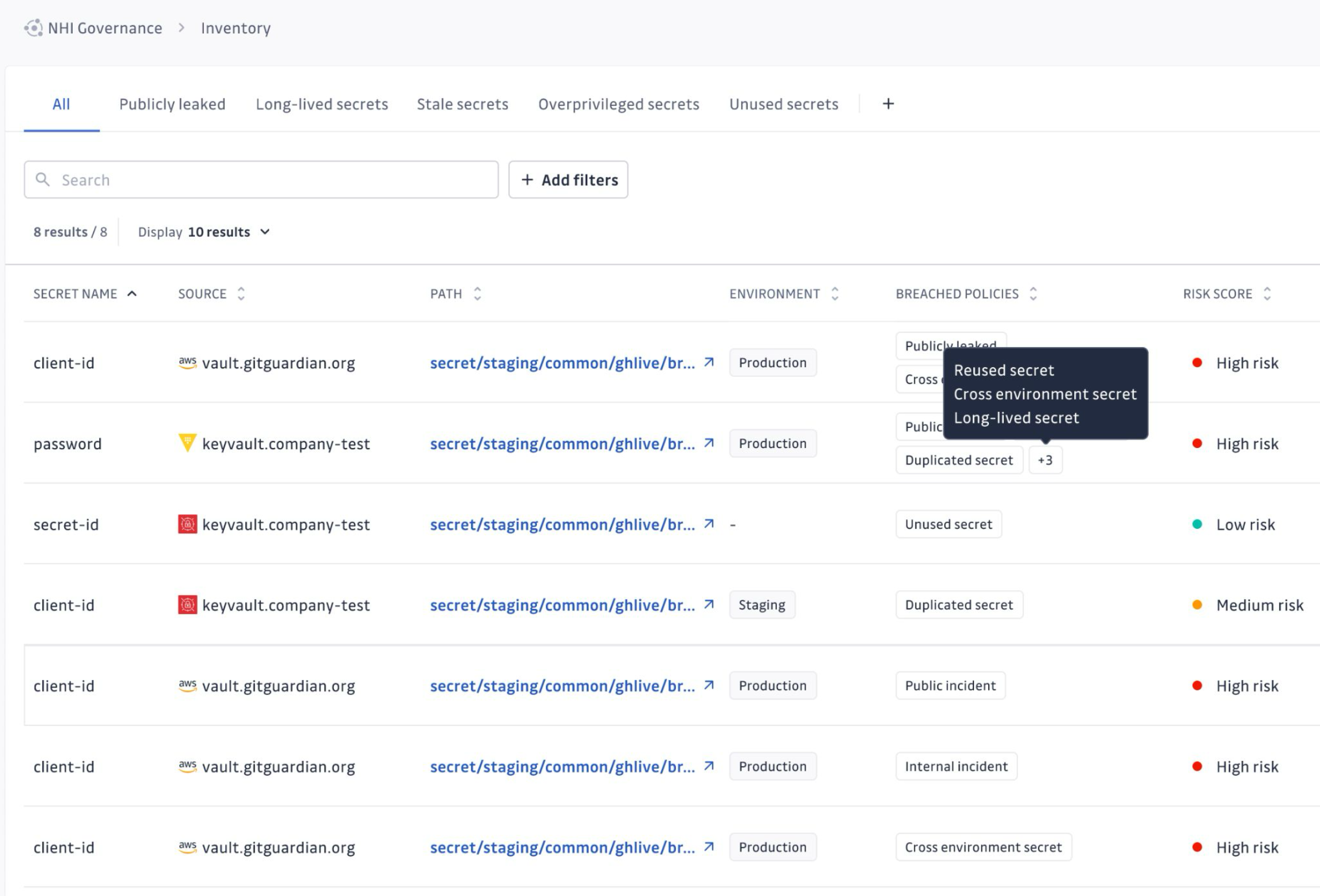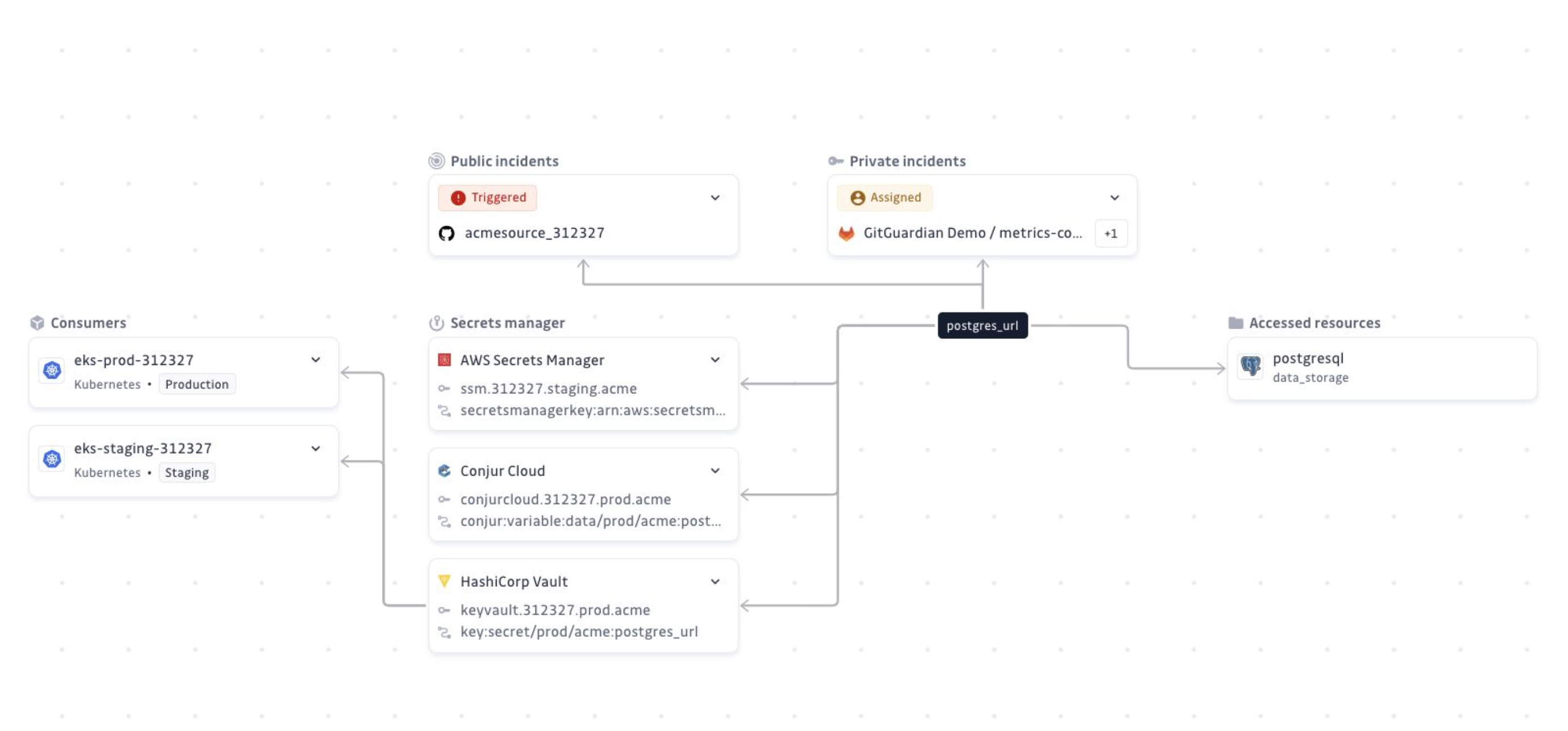Discover your NHIs
NHI Inventory
The inventory provides a centralized, searchable table listing all Non-Human Identities discovered across your perimeter. This dynamic view helps you monitor, audit, and triage NHIs efficiently across various environments and sources.
Inventory table overview
Each row in the inventory represents a unique NHI and displays the following key attributes:
- Secret name – The identifier of the associated secret.
- Source – The integration where the NHI was discovered (e.g., the name of the secret manager or Kubernetes cluster).
- Path – The exact path or location of the secret within the source.
- Environment – The associated environment tag (e.g.,
prod,staging,dev). Learn how to categorize environments - Breached policies – Any detected misconfigurations or violations of security best practices. Learn more about breached policies

The inventory supports filtering based on:
- Category
- Breached policy
- Environment
- Source
Clicking into an NHI opens a detailed view that includes policy breaches, secret version, and a visual map of the NHI’s relationships and context.
You can also browse through previous versions of the secret as stored in the secret manager. This allows you to trace changes over time and assess security implications.
Note that if a version is deleted, metadata remains but the graph is empty and marked as deleted, while fully destroyed secrets disappear from the inventory.
Exploration map
The Exploration map gives you a visual, end-to-end view of an NHI, helping you understand its connections, usage, and potential impact across your environment.
The map is composed of:
- Secrets managers – Where the NHI's secrets are safely stored.
- Consumers – Entities (such as services, scripts, or jobs) that use the secret to authenticate and access other systems.
- Accessed resources – The targets accessed by the consumers, along with their permissions, based on Secret Analyzers.
- Incidents – Both public and private secret incidents associated with the NHI.

You can access the map from an NHI’s detail view or directly from a secret incident, enabling fast, contextual navigation between detection and analysis.
Use cases
While the primary goal is to visualize and contextualize NHIs, the map also helps to:
- Streamline remediation – Quickly assess the impact of revoking a secret and identify all affected systems.
- Investigate leaks – Trace which consumers and resources may have been compromised.
- Improve secret hygiene – Spot stale or overprivileged secrets, unused consumers, and other hygiene issues across your perimeter.

